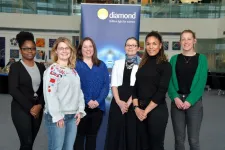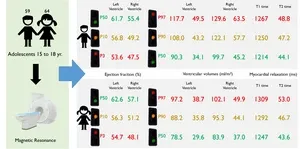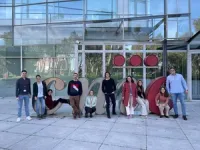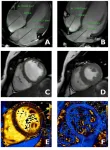In the lead up to International Women’s Day (8th March), Diamond’s workshop will shine a light on career pathways in world-changing science. A panel of four women from Diamond will address how their work across science and engineering helps to address 21st century challenges from energy research to pandemic preparedness. They will share their professional journeys and insights into their roles. Job roles range from scientists, engineers, software experts, technicians to professional roles all essential to enabling the most brilliant science performed by scientists at Diamond.
Through part of the next decade, Diamond will deliver an upgrade programme called Diamond-II. To continue delivering the world-changing science that Diamond leads and enables, Diamond-II is a project that will deliver a new machine and new beamlines with a comprehensive series of upgrades to optics, detectors, sample environments, sample delivery capabilities and computing.
The workshop panel will feature Dr Lorraine Bobb – Head of Diagnostics Group; Sarah Macdonell – Head of Beamline Systems Engineering; Dr Chidinma Okolo – Beamline Scientist at B24 and Dr Lucy Saunders – Beamline Scientist at I11. It will be chaired by Isabelle Boscaro-Clarke – Head of Impact, Communications and Engagement, with an interactive Q&A session facilitated by Molly Pekarik Fry – Web and Digital Content Manager. (Short biographies below)
UKRI announced last June a new investment of £81.5 million over the next three years in Diamond-II, which when complete will:
open up new pathways for materials research and drug development.
offer real-time insights into processes such as advanced manufacturing and the performance of next-generation batteries and much more as Diamond science permeates virtually all fields of research.
Isabelle Boscaro-Clarke, Head of Impact, Communications and Engagement comments: “Diamond is preparing for its final stage bid for making this investment a reality and it is paramount that we secure the best people to join us in all of the roles that are becoming available. To this end, we have created an open talent pool for anyone interested to apply. All one has to do is register for a job alert”.
“It will be an exciting time to join Diamond as we lay the foundations for the future of the facility. Currently 12 vacancies are open and dozens will be added over the coming months. We’re acting fast to ensure our preparations for the upgrade are progressing in line with the project plan. So, if you are looking for a place where you can make a difference, where 21st century global challenges are being addressed, there’s no better place to be.”
To date, together with its 16,000 strong user community, Diamond has enabled ground-breaking scientific achievements, including:
time-critical data and resources for improved public understanding of COVID-19;
research of an enzyme that degrades plastic;
a new synthetic vaccine for the virus causing foot-and-mouth disease.
Andrea Ward, CEO and Director of Finance and Corporate Services concludes:
“Diamond Light Source has established itself as a world-class synchrotron facility enabling research by leading academic and industrial groups in physical and life sciences. Diamond has pioneered a model of highly efficient and uncompromised infrastructure offered as a user-focussed service driven by technical and engineering innovation.”
ENDS
Workshop AAAS link: https://aaas.confex.com/aaas/2023/meetingapp.cgi/Session/31000 Chair: Isabelle Boscaro-Clarke – Head of Impact, Communications & Engagement Presenter: Molly Pekarik-Fry – Web & Digital Content Manager
For further information please contact Diamond Communications: Lorna Campbell +44 7836 625999 or Isabelle Boscaro-Clarke +44 1235 778130 Diamond Light Source: www.diamond.ac.uk Twitter: @DiamondLightSou
Speaker Bios:
Lorraine Bobb – Head of Diagnostics Group
Lorraine found her passion in the field of Beam Diagnostics, and currently serves Diamond as Head of Diagnostics group, leading the operation of existing diagnostics and feedback systems as well as developing new state-of-the-art instrumentation. She completed her undergraduate MSci Physics degree at Royal Holloway, University of London (RHUL), and to gain a better understanding on career path possibilities in the field, she undertook a summer student placement within the Diagnostics group at Diamond. After finishing her degree, Lorraine went on to do a PhD at RHUL in beam diagnostics where she worked at CERN in Switzerland for 3 years (notably during the Higgs discovery) and undertook shifts with beam to test her new diagnostic prototype at the Cornell Electron Storage Ring, USA. Now as Head of the Diagnostics Group Lorraine leads a team of physicists, engineers, technicians and apprentices, who provide instruments that are effectively the ‘eyes and ears’ of the Diamond machine. They design, build, maintain and continually improve a variety of instrumentation on the accelerators and beamlines to ensure the delivery of high-quality beams for our scientific user community and their beamline experiments. With these instruments Diamond measures parameters of the electron and photon beams such as position, size, bunch length, charge and many more. They also implement feedback systems to allow us to control these parameters.
Sarah Macdonell - Head of Beamline Systems Engineering Group
Sarah Macdonell serves as Diamond’s Head of Beamline Systems Engineering Group Manager, where she manages a multi-disciplined beamline systems engineering team, enabling them to push the boundaries of technical possibility to improve Diamond’s delivery of world class science. Sarah completed her Bachelor’s degree in Mechanical engineer at Loughborough University in 2002, followed by completing her Master’s degree in Mechatronics in 2003. More recently Sarah has undertaken a Senior Leaders Master’s Degree Apprenticeship and has subsequently obtained an MBA in Leadership Practice. Prior to joining Diamond Sarah worked for over 9 years at Malvern Instruments, a global manufacturer and supplier of laboratory analytical instruments, notable for their work in the advancement of particle sizing technology. Sarah led the development and maintenance of the company Mechanical Engineering Strategy to improve and develop the discipline of mechanical engineering across the business. Sarah joined Diamond in July 2017 at Head of Beamline Systems Engineering and has broader responsibility for quality and resource management across the engineering group. Sarah played an active role in Diamond’s first ever synchrotron school back in 2018 for engineers, highlighting how basic as well as innovative engineering is vital to the successful science carried out in synchrotrons. The school’s goal was to give these engineers a good insight and grounding into many of the specialist technical issues that arise when designing, building and testing systems for light source facilities.
Chidinma Okolo – Beamline Scientist B24
Chidinma Okolo currently serves as Beamline Scientist on Diamond’s B24 beamline, which specialises in correlative cryo-imaging. Beamline B24 offers 3D imaging with soft X-ray tomography (cryoSXT) complemented by super resolution fluorescence structured illumination microscopy (cryoSIM). She graduated from the University of Nigeria, Nsukka, with a Bachelor of Science degree in Zoology (2011) and a Master of Science degree in Zoology (with specialization in Physiology) (2015). Chidinma worked for 3 years as an Assistant Lecturer at the University of Nigeria, Nsukka, before proceeding to New Zealand for her doctoral training. She completed her doctoral training at the University of Otago, New Zealand and was awarded her PhD in December 2019. Her thesis expanded existing knowledge on the implications of post-translational modifications on the diabetic heart, with focus on the cardiac ryanodine receptor. Thereafter, she found herself highly interested in the organisation of the cellular ultrastructure in response to biological or external stressors. Chidinma joined the team at beamline B24 in 2019, where she uses correlative light and X-ray microscopy to study structural changes within the cellular landscape with time. Her primary role is to use her array of knowledge and technical skills to drive instrument development, disseminate knowledge gathered from in-house and collaborative research as well as providing support to academic and industrial users at the beamline.
Lucy Saunders – Beamline Scientist I11
Lucy did her PhD in Structural Chemistry at the University of Bath which was jointly funded by Diamond, and currently serves as a Beamline Scientist on the I11 beamline at Diamond Light Source, specialising in chemical crystallography of microcrystalline powders. Before joining I11, Lucy was a Post-Doctoral Research Associate (PDRA) on beamline I19 at Diamond, with a focus on single crystal samples. Lucy has built up many years’ experience in diffraction at both neutron and synchrotron sources. Her role involves preparing the beamline for user experiments and during an experiment she provides support and advice to the scientists to help them get the best possible results from their beamtime. The role also gives the opportunity to work on in-house research projects such as the development of new and current sample environments as well as to build on her own research areas. Her research focuses on exploring proton transfer behaviour in multi component molecular crystals. She uses a combination of methods to do this including diffraction, spectroscopy and computational analysis. In some cases, proton transfer is coupled with a structural phase transition which may also lead to changes in material properties.
Isabelle Boscaro-Clarke – Head of Impact, Communications & Engagement
Isabelle is a strategist with over 25 years’ experience in leading science communications, as well as engagement activities within complex scientific organisations. Isabelle has worked for Diamond Light Source since 2003 and has embedded a strong programme of engagement activities at the heart of the facility. The facility welcomes some 7,000 visitors every year, allowing direct access to some of the most inspiring scientists, engineers, professional staff and researchers in the world. As a sociologist by academic background, she is a co-author along with Technopolis for the socio-economic impact study where she helped design new methodologies for the assessment of key performance indicators. She is at the helm of three key functions for Diamond - Impact, Corporate Communications and Engagement. With a user community of over 16,000 researchers, she's overseen strong engagement programmes from the student programme to the delivery of scientific events. Prior to joining Diamond, Isabelle held a similar position at the National Physical Laboratory (NPL) , where she also acted as a consultant to the UK Government’s Small Business Service (SBS).
Molly Pekarik-Fry – Web & Digital Content Manager
Molly serves Diamond as Web & Digital Content Manager and is an experienced science and corporate communications professional, with a history of improving multi-channel digital solutions for technology and research facilities. Diamond’s digital communications strategy connects our world-changing science facility with thousands of researchers and users, STEM professionals, and students, daily through a programme of agile web design and digital UX, and social media community building. With over a decade of corporate communications experience, Molly has helped deliver digital outreach for partners such as Microsoft, Google, LG Electronics, Casio Projectors, and more.
About Diamond Light Source provides industrial and academic user communities with access to state-of-the-art analytical tools to enable world-changing science. Shaped like a huge ring, it works like a giant microscope, accelerating electrons to near light speeds, to produce a light 10 billion times brighter than the Sun, which is then directed off into 33 laboratories known as ‘beamlines’. In addition to these, Diamond offers access to several integrated laboratories including the world-class Electron Bio-imaging Centre (eBIC) and the Electron Physical Science Imaging Centre (ePSIC).
Diamond serves as an agent of change, addressing 21st century challenges such as disease, clean energy, food security and more. Since operations started, more than 16,000 researchers from both academia and industry have used Diamond to conduct experiments, with the support of approximately 760 world-class staff. Almost 12,000 scientific articles have been published by our users and scientists.
Funded by the UK Government through the Science and Technology Facilities Council (STFC), and by the Wellcome Trust, Diamond is one of the most advanced scientific facilities in the world, and its pioneering capabilities are helping to keep the UK at the forefront of scientific research.
Diamond was set-up as an independent not for profit company through a joint venture, between the UKRI’s Science and Technology Facilities Council and one of the world’s largest biomedical charities, the Wellcome Trust - each respectively owning 86% and 14% of the shareholding.
END








